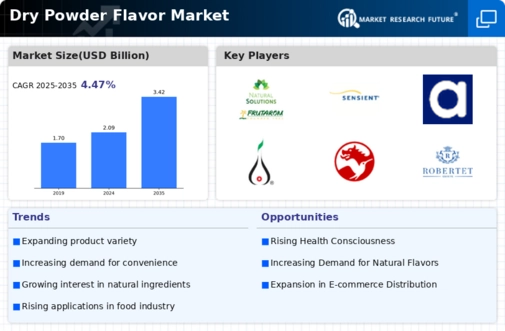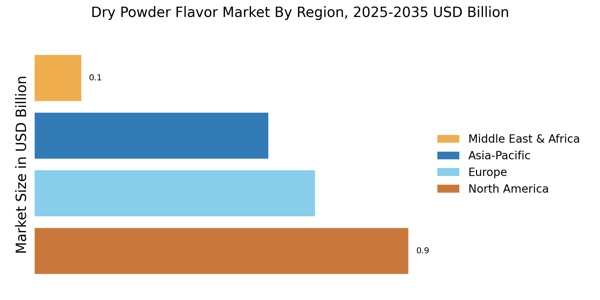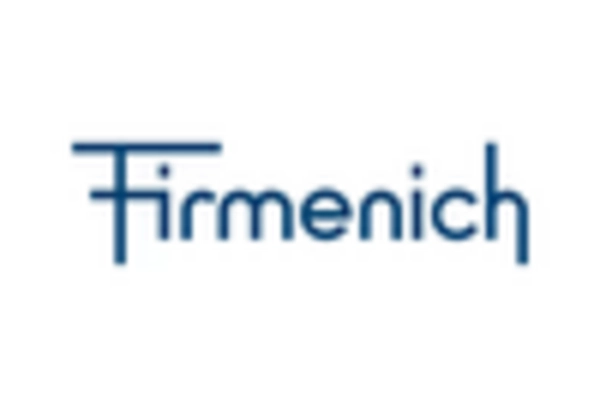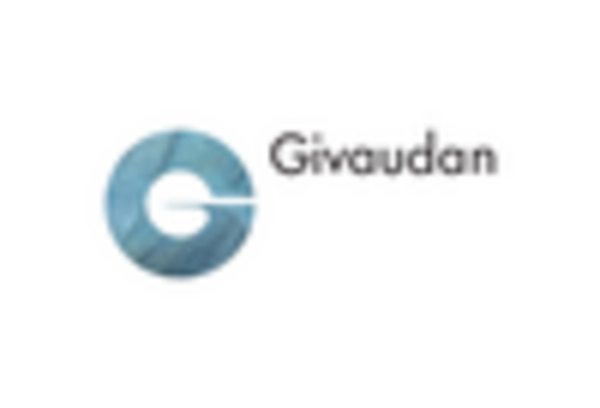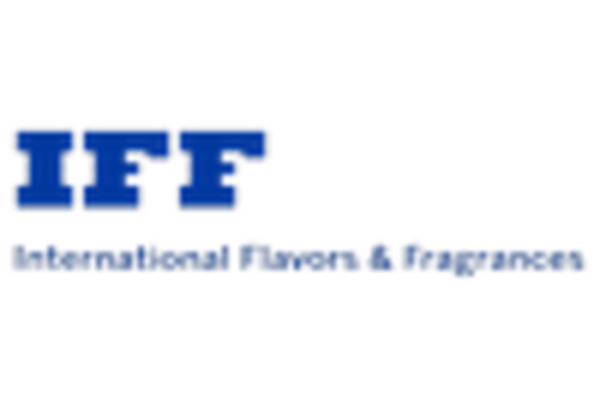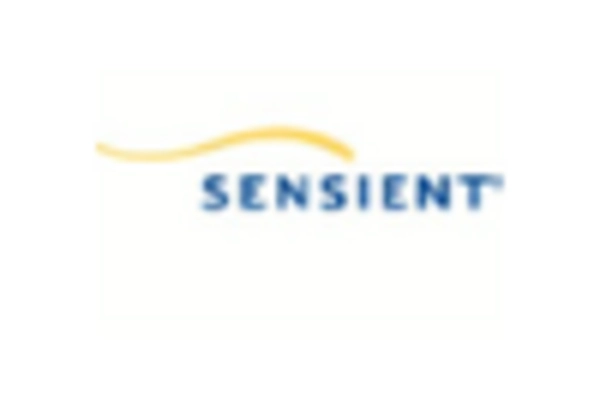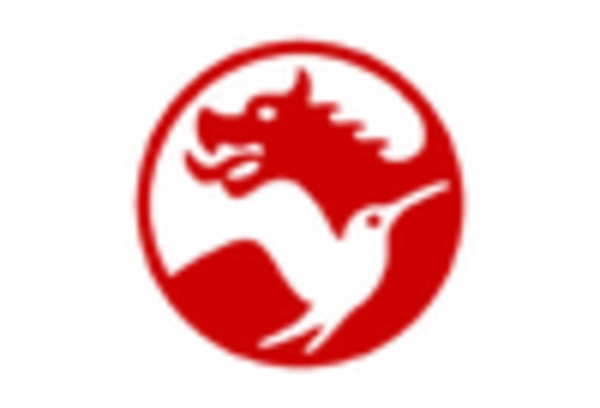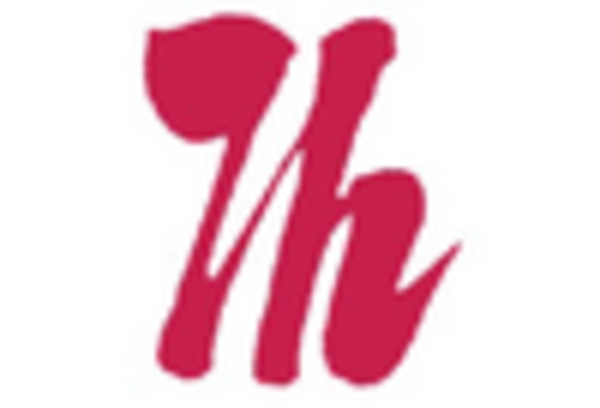Health-Conscious Consumer Trends
The increasing awareness of health and wellness among consumers appears to be a driving force in the Dry Powder Flavor Market. As individuals seek healthier alternatives to traditional flavoring agents, the demand for natural and organic dry powder flavors is likely to rise. According to recent data, the market for natural flavors is projected to grow at a compound annual growth rate of approximately 5.5% over the next five years. This trend suggests that manufacturers in the Dry Powder Flavor Market may need to adapt their product offerings to align with consumer preferences for clean label products, which could include fewer artificial ingredients and more plant-based options. Consequently, companies that innovate in this space may find themselves at a competitive advantage.
Innovations in Flavor Technology
Technological advancements in flavor formulation and production are likely to play a crucial role in shaping the Dry Powder Flavor Market. Innovations such as encapsulation techniques and microencapsulation are enabling manufacturers to enhance flavor stability and release profiles. This could lead to improved product quality and consumer satisfaction. Furthermore, the integration of artificial intelligence and machine learning in flavor development may streamline the process of creating new and unique flavors. As these technologies evolve, they may provide companies in the Dry Powder Flavor Market with the tools necessary to meet the ever-changing demands of consumers, potentially leading to increased market share and profitability.
E-commerce Growth and Accessibility
The rise of e-commerce platforms has transformed the way consumers access products, including those in the Dry Powder Flavor Market. As online shopping becomes increasingly prevalent, consumers are more likely to explore and purchase specialty flavors that may not be available in local stores. Recent statistics suggest that e-commerce sales in the food and beverage sector are projected to grow by over 20% annually. This trend indicates that companies in the Dry Powder Flavor Market could benefit from establishing a robust online presence, allowing them to reach a broader audience and cater to niche markets. The convenience of online shopping may also encourage consumers to experiment with new flavors, thereby expanding the market.
Growing Interest in Culinary Experiences
The rising trend of culinary exploration among consumers appears to be influencing the Dry Powder Flavor Market. As individuals become more adventurous in their cooking and dining experiences, there is a growing demand for diverse and exotic flavors. This trend is reflected in the increasing popularity of international cuisines and specialty foods. Market Research Future indicates that the demand for ethnic flavors is expected to grow significantly, with consumers seeking to replicate restaurant-quality dishes at home. Consequently, manufacturers in the Dry Powder Flavor Market may find opportunities to develop unique flavor profiles that cater to this adventurous spirit, potentially enhancing their product offerings and attracting a wider customer base.
Rising Demand in Food and Beverage Sector
The food and beverage sector continues to be a significant contributor to the growth of the Dry Powder Flavor Market. With the increasing consumption of processed foods and beverages, the need for convenient and flavorful options is evident. Market data indicates that The Dry Powder Flavor Market is expected to reach a valuation of over 4 trillion dollars by 2026. This growth is likely to drive the demand for dry powder flavors, as manufacturers seek to enhance the taste and appeal of their products. Additionally, the versatility of dry powder flavors allows for their incorporation into a wide range of applications, from snacks to beverages, further solidifying their role in the food and beverage industry.


